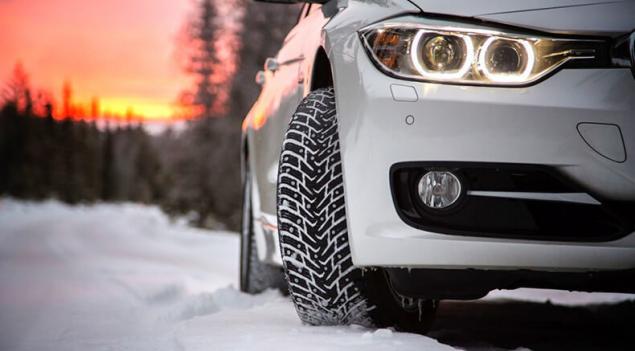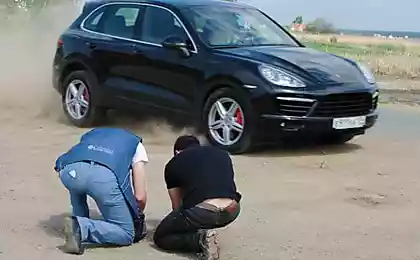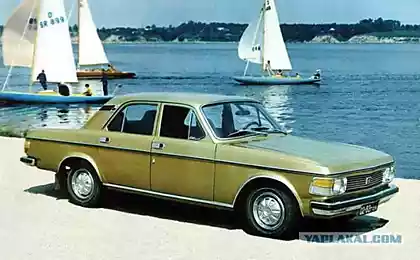419
9 the main rules of driving in winter
It would seem, winter driving is the same as summer, only in winter. But no, driving in the cold season requires not only special knowledge, skills, but also adherence to certain rules.
That's what she thinks, for example, the founder of the community of Formula 1 in Ukraine F1UA Roman Goncharov. Here he gathered the most important nuances of driving in the winter. Of course, there are some differences in driving with the front, rear, or all-wheel drive, but many things are the same for all.

1. Operate the vehicle SMOOTHLY. Any sudden movements. Understand one simple thing: any sudden action with the steering wheel, gas pedal or brakes and your car breaks down in a skid.
2. Be aware that your machine. At least once during the winter, visit the circuit or any closed area where try out your machine in critical situations. Sudden braking, sharp acceleration, sharp turns, in order to understand where the limit of grip your wheels, how the car behaves, and whether you have it operated. In General, give time for these things. It is important to understand the mechanics of the return of his car.
3. Continually monitor the condition of the road surface. If you are driving and the weather conditions deteriorate on the eyes, with some frequency, when the traffic situation allows, try to slightly press down the brake pedal and to understand how the tires cope with the current weather. It is not necessary to sharply hit the brakes in a busy thread. Choose a time when no cars nearby, and just hit the pedal a little more than usual is certainly not superfluous, and if the situation arises when you have to use all your driving skills, it will be easier to understand whether you are able to brake in time or avoid the obstacle.
4. Be predictable. Don't make maneuvers which may confuse other road users. Again, remember about the smoothness. Not only try to keep it themselves, but do not provoke others, so they were forced to make sudden movements.
5. Don't be afraid to use the signal. Unfortunately, even the precaution does not always save, and it happens that the car torpedo rushes to the corner, and you just a passenger, while sitting in the driver's seat. I personally had such a case: I see that the pedestrians have already started crossing the road, and I'm going just for them. In addition to trying to urolith of a skid, I began to actively honk — noticed me and stopped. And it saved someone's health.
6. Anything's better than a head-on collision. It may sound cruel, but believe me, it is better to "catch" a tree/post/barrier/curb/flower bed than to fly into the oncoming lane. This confirms both the statistics and common sense. The impact with a static object, a priori, not as critical as the impact with an oncoming object weighing more than a ton with your same rate (or even higher).

7. Think about other road users. Let's say you have a minivan. Moving for this car, almost can not see what is happening ahead. And if approaching the intersection, you see that behind someone very close to you, let him know in advance that we should start to slow down.
Just touch the brake pedal to lit the foot. This will give the signal behind the vehicle that would also have to slow down.
8. PEDESTRIANS!!! If you are a pedestrian, I beg you, before you cross the road, make sure that the intersection is not carried unmanaged polutoratonny projectile in the car. Of course, you're right, when you go on a green light, but someone is going to care if you demolish?
MONDAY: how to love this day and to benefit from it5 ways to win every argument: the tactics of FBI
9. In this paragraph all the things that you read earlier. Clean the glass roof from snow. Buy a good rubber, don't skimp, because your car clings to the road surface only these four contact and NOTHING MORE. Observe the speed limit, slow down in advance, accelerate smoothly, use a good quality wiper. I wish you good luck on the roads! published
Source: autogeek.com.ua/9-glavnyih-pravil-vozhdeniya-v-zimniy-period/
That's what she thinks, for example, the founder of the community of Formula 1 in Ukraine F1UA Roman Goncharov. Here he gathered the most important nuances of driving in the winter. Of course, there are some differences in driving with the front, rear, or all-wheel drive, but many things are the same for all.

1. Operate the vehicle SMOOTHLY. Any sudden movements. Understand one simple thing: any sudden action with the steering wheel, gas pedal or brakes and your car breaks down in a skid.
2. Be aware that your machine. At least once during the winter, visit the circuit or any closed area where try out your machine in critical situations. Sudden braking, sharp acceleration, sharp turns, in order to understand where the limit of grip your wheels, how the car behaves, and whether you have it operated. In General, give time for these things. It is important to understand the mechanics of the return of his car.
3. Continually monitor the condition of the road surface. If you are driving and the weather conditions deteriorate on the eyes, with some frequency, when the traffic situation allows, try to slightly press down the brake pedal and to understand how the tires cope with the current weather. It is not necessary to sharply hit the brakes in a busy thread. Choose a time when no cars nearby, and just hit the pedal a little more than usual is certainly not superfluous, and if the situation arises when you have to use all your driving skills, it will be easier to understand whether you are able to brake in time or avoid the obstacle.
4. Be predictable. Don't make maneuvers which may confuse other road users. Again, remember about the smoothness. Not only try to keep it themselves, but do not provoke others, so they were forced to make sudden movements.
5. Don't be afraid to use the signal. Unfortunately, even the precaution does not always save, and it happens that the car torpedo rushes to the corner, and you just a passenger, while sitting in the driver's seat. I personally had such a case: I see that the pedestrians have already started crossing the road, and I'm going just for them. In addition to trying to urolith of a skid, I began to actively honk — noticed me and stopped. And it saved someone's health.
6. Anything's better than a head-on collision. It may sound cruel, but believe me, it is better to "catch" a tree/post/barrier/curb/flower bed than to fly into the oncoming lane. This confirms both the statistics and common sense. The impact with a static object, a priori, not as critical as the impact with an oncoming object weighing more than a ton with your same rate (or even higher).

7. Think about other road users. Let's say you have a minivan. Moving for this car, almost can not see what is happening ahead. And if approaching the intersection, you see that behind someone very close to you, let him know in advance that we should start to slow down.
Just touch the brake pedal to lit the foot. This will give the signal behind the vehicle that would also have to slow down.
8. PEDESTRIANS!!! If you are a pedestrian, I beg you, before you cross the road, make sure that the intersection is not carried unmanaged polutoratonny projectile in the car. Of course, you're right, when you go on a green light, but someone is going to care if you demolish?
MONDAY: how to love this day and to benefit from it5 ways to win every argument: the tactics of FBI
9. In this paragraph all the things that you read earlier. Clean the glass roof from snow. Buy a good rubber, don't skimp, because your car clings to the road surface only these four contact and NOTHING MORE. Observe the speed limit, slow down in advance, accelerate smoothly, use a good quality wiper. I wish you good luck on the roads! published
Source: autogeek.com.ua/9-glavnyih-pravil-vozhdeniya-v-zimniy-period/
4 hot soup that will warm in the chilly day
How to draw patch from a practical and aesthetic point of view






















